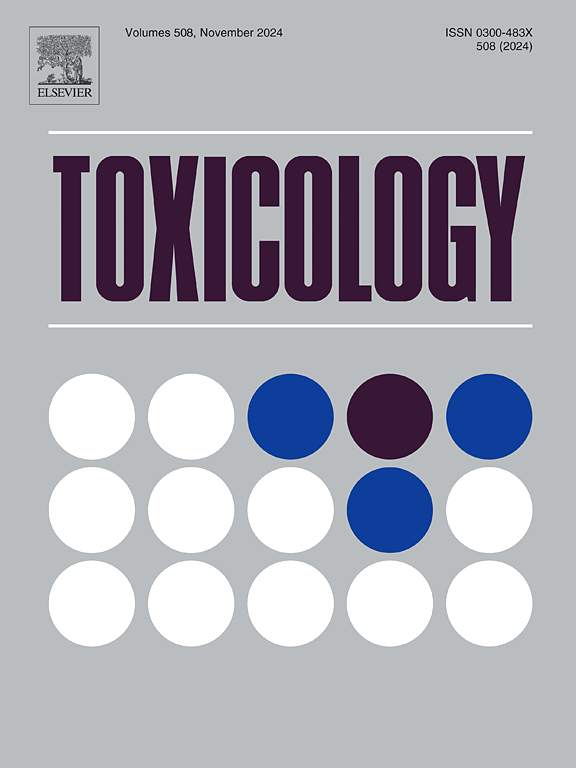Iron supplementation switches mode of cell death to ferroptosis during acetaminophen-induced liver injury in mice rendering it resistant to N-acetylcysteine
IF 4.6
3区 医学
Q1 PHARMACOLOGY & PHARMACY
引用次数: 0
Abstract
Acetaminophen (APAP) overdose can cause liver injury and is the leading cause of acute liver failure in Western countries. Hepatocellular necrosis induced by APAP involves the formation of a reactive metabolite, triggering mitochondrial oxidant stress and peroxynitrite formation. Iron-catalyzed protein nitration is critical for mitochondrial dysfunction and cell death in the absence of lipid peroxidation (LPO). However, co-treatment of APAP and ferrous sulfate aggravated protein nitration and liver injury but also triggered extensive LPO (measured as malondialdehyde and hydroxy eicosatetraenoic acid (HETE) species). The objective of this study was to evaluate whether the aggravated injury under these conditions is caused by a combination of protein nitration and LPO or if LPO is now the dominant injury mechanism. To test this, C57BL/6 J mice were co-treated with APAP (300 mg/kg) and a moderate dose of ferrous sulfate (0.15 mmol/kg) for 6 h. Some animals also received a dose of Mito-TEMPO, the mitochondria-targeted SOD mimetic, or minocycline, an inhibitor of mitochondrial iron uptake. Although Mito-TEMPO and minocycline eliminated protein nitration and liver injury after APAP alone, these interventions did not affect LPO and only had a moderate effect on protein nitration and liver injury in the APAP+Fe2+ group, suggesting LPO as the main mechanism of cell death. Consistent with these findings, delayed treatment with clinically relevant antidotes N-acetylcysteine and fomepizole did not reduce LPO or liver injury. Thus, liver injury after APAP+Fe2+ is no longer primarily driven by mitochondrial oxidant stress and peroxynitrite-mediated necrosis but by lipid peroxidation and a ferroptosis-like cell death.
在对乙酰氨基酚诱导的小鼠肝损伤过程中,补铁可将细胞死亡模式切换为铁凋亡,使其对n-乙酰半胱氨酸产生抗性
对乙酰氨基酚(APAP)过量可引起肝损伤,是西方国家急性肝衰竭的主要原因。APAP诱导的肝细胞坏死涉及一种反应性代谢物的形成,引发线粒体氧化应激和过氧亚硝酸盐的形成。在脂质过氧化(LPO)缺失的情况下,铁催化的蛋白质硝化对线粒体功能障碍和细胞死亡至关重要。然而,APAP和硫酸亚铁的共同处理加剧了蛋白质的氮化和肝损伤,但也引发了广泛的LPO(以丙二醛和羟基二十碳四烯酸(HETE)种测量)。本研究的目的是评估在这些条件下的加重损伤是由蛋白质硝化和LPO联合引起的,还是LPO现在是主要的损伤机制。为了验证这一点,C57BL/6 J小鼠与APAP(300 mg/kg)和中等剂量硫酸亚铁(0.15 mmol/kg)共处理6 h。一些动物也接受了一剂Mito-TEMPO,线粒体靶向SOD模拟物,或二甲胺四环素,线粒体铁摄取抑制剂。虽然Mito-TEMPO和米诺环素消除了单独APAP后的蛋白质硝化和肝损伤,但这些干预措施不影响LPO,仅对APAP+Fe2+组的蛋白质硝化和肝损伤有中等影响,提示LPO是细胞死亡的主要机制。与这些发现一致,延迟使用临床相关的解毒剂n -乙酰半胱氨酸和福美唑治疗并没有减少LPO或肝损伤。因此,APAP+Fe2+后的肝损伤不再主要由线粒体氧化应激和过氧亚硝酸盐介导的坏死驱动,而是由脂质过氧化和铁中毒样细胞死亡驱动。
本文章由计算机程序翻译,如有差异,请以英文原文为准。
求助全文
约1分钟内获得全文
求助全文
来源期刊

Toxicology
医学-毒理学
CiteScore
7.80
自引率
4.40%
发文量
222
审稿时长
23 days
期刊介绍:
Toxicology is an international, peer-reviewed journal that publishes only the highest quality original scientific research and critical reviews describing hypothesis-based investigations into mechanisms of toxicity associated with exposures to xenobiotic chemicals, particularly as it relates to human health. In this respect "mechanisms" is defined on both the macro (e.g. physiological, biological, kinetic, species, sex, etc.) and molecular (genomic, transcriptomic, metabolic, etc.) scale. Emphasis is placed on findings that identify novel hazards and that can be extrapolated to exposures and mechanisms that are relevant to estimating human risk. Toxicology also publishes brief communications, personal commentaries and opinion articles, as well as concise expert reviews on contemporary topics. All research and review articles published in Toxicology are subject to rigorous peer review. Authors are asked to contact the Editor-in-Chief prior to submitting review articles or commentaries for consideration for publication in Toxicology.
 求助内容:
求助内容: 应助结果提醒方式:
应助结果提醒方式:


